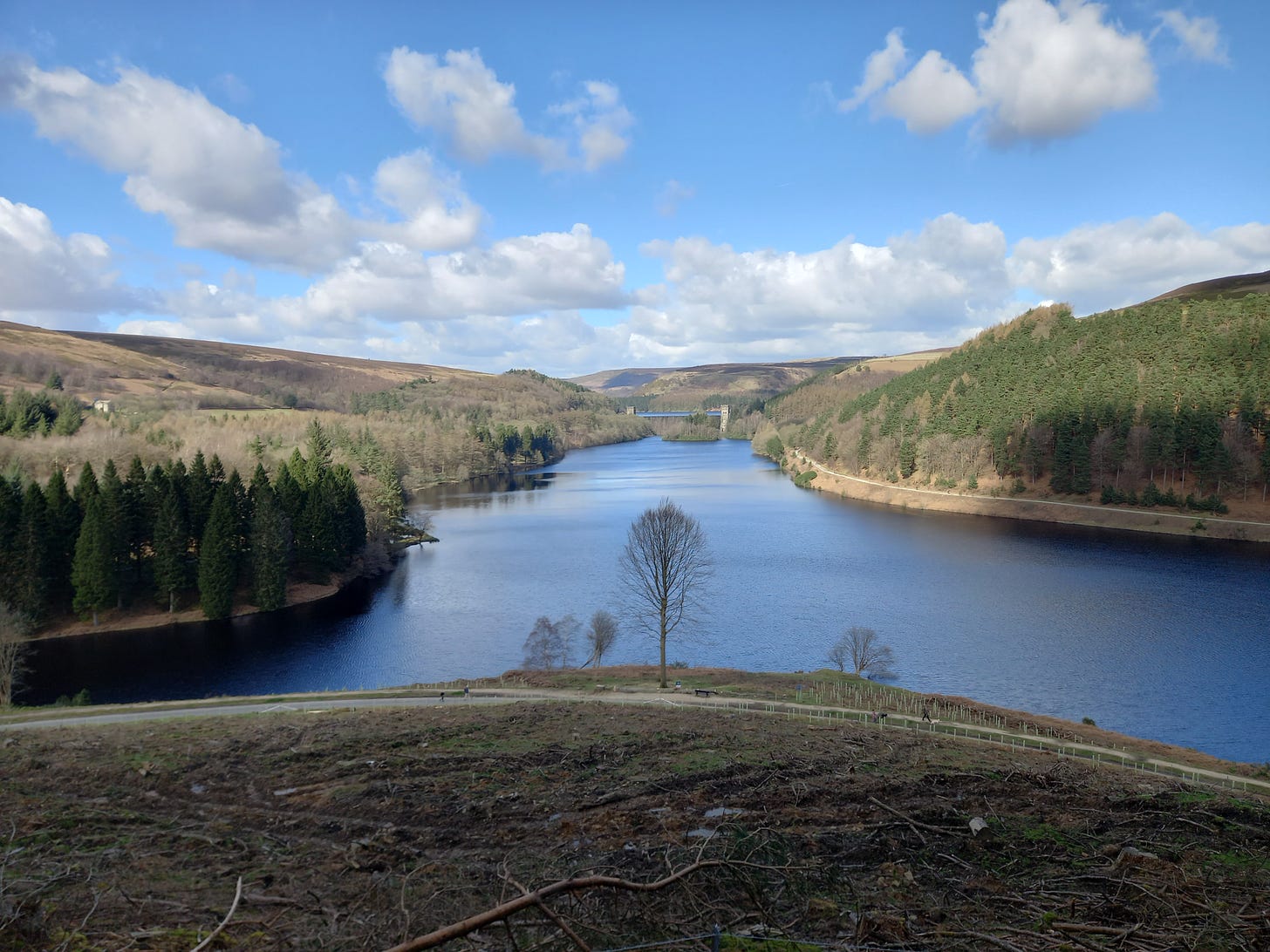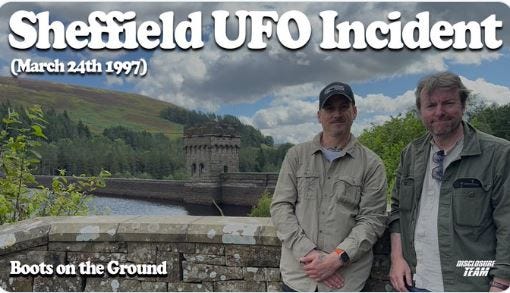It was a story that could have been lifted straight out of a plot from The X-Files: an unidentified flying object zooming through the clear night sky, callers jamming police switchboards to report a light aircraft skimming rooftops on a collision course with the hills west of Sheffield, RAF jets screaming through the sky as if in pursuit of something…
And finally, a deafening aerial explosion that sent gamekeepers rushing from their isolated cottage on a Yorkshire moor.

Has the evidence for this “crash that never was” been covered up by the authorities ever since? Is there a massive cover-up underway to hide the truth from the public?
Or was this unsolved mystery the product of a series of unconnected events and coincidences including a military exercise and the misperception of natural and man-made aerial objects including RAF jets on a low-level training exercise?
Back in March 1997 I published a series of exclusive reports on the unraveling Howden Moors mystery for the evening paper, Sheffield Star, where I worked as a news reporter. At the time the Hale-Bopp comet was prominent in the night sky and some of the folks who reported strange flying objects were out sky-watching.
One of these was South Yorkshire Police special constable Marie France who described seeing a ‘peculiar aircraft’ skimming treetops near the village of Bolsterstone second before the explosion was heard.
I was on calls duty when the ‘crash’ happened and was the first journalist to speak to emergency services, police, RAF and mountain rescue teams on site. The fruitless search of 40 square miles of Peakland moors involved five civilian mountain rescue teams, two police forces and the West Yorkshire Police helicopter, a RAF Sea King airsea rescue helicopter and fire fighters…but no trace of any wreckage was ever found.
At one point an air exclusion zone was set up over the northern Peak landing at Manchester were re-routed to avoid the search zone. The entire operation was estimated to have cost £50,000.
And in the following year I prompted my MP Helen Jackson to raise a series of probing questions about the source of the mystery in the House of Commons.
My stories for the Sheffield Star revealed that two unexplained ‘sonic events’ were recorded by the British Geological Survey at the precise time that witnesses saw what they believed was an aircraft crashing into the Dark Peak moors between Sheffield and Manchester. The Ministry of Defence later admitted the cause of the incident remains ‘unexplained’ - but clues suggest that RAF Tornado aircraft had sparked the alert during a low-level training exercise

You can read a detailed report of my findings on my website here
Earlier this year on the 27th anniversary of the unsolved mystery I returned to the scene to pinpoint some of the key locations where unusual sightings were recorded at the time. And in August I paid another visit with UFO researcher Vinnie Adams from the Disclosure Team. Vinnie recorded a short film during our visit to the Derwent dams complex.
The film includes footage of the dams where the famous WW2 RAF ‘Dambusters’ squadron flew low-level sorties to test ‘bouncing bomb’ that was used to attack German dams in the Ruhr valley.
In 2006-7 I obtained a complete copy of the investigation report by the Flying Complaints Flight (FCF), a branch of the RAF’s Provost and Security Service. who at that time were based at RAF Rudloe Manor in Wiltshire. This secretive unit was once regarded by some UFOlogists as the UK’s answer to Area 51.
The P&SS report confirmed that a major pre-booked exercise involving fighter aircraft was underway on the night of 24 March 1997 and provided enough detail to conclude these aircraft were responsible for the majority of the ‘sightings’ that triggered the aircrash scare.

However, due to the delay in the request for the investigation, the RAF P&SS were unable to identify the specific aircraft responsible for the sonic booms. With regards to the sonic evidence, P&SS concluded a more likely explanation was natural phenomena, coincident with the exercise:
“…although BGS can differentiate between sonic and seismic events, sonic events cannot be identified as being specifically caused by aircraft. Phenomena such as satellite re-entry have been known to cause sonic events and this may explain the happenings of 24 March 1997.”
The Provost & Security Services report dated 27 May 1998 also summarises the radar evidence, noting:
“AIS (Mil) at West Drayton were requested to provide a radar synopsis and the radar tape for the 24 March 1997 was still available. The tape was viewed between 242130ZMar97 and 2422000ZMar97, using the Claxby and Great Dun Fell Radar heads. The recording reveals that at 2139Z, a squawk of 2574/143 (Orcam/Karlshrue), is in descent heading west. At 2145 ac [aircraft] squark 2574/048 passed to the north by 2nm of the plotted position and the aircraft lands at Manchester Airport at 2145Z. The Air Information Service Officer is of the opinion that this aircraft is too slow moving to have caused a sonic boom. No other aircraft were seen to be flying in the area.”
The P&SS report concludes: “It is therefore considered that no military link can be established to this reported event and the case is now considered closed.”
Papers covering our correspondence with the MoD were released by The National Archives in 2011.




